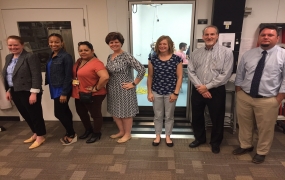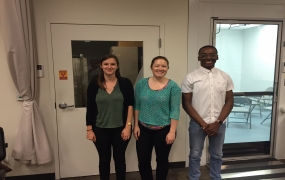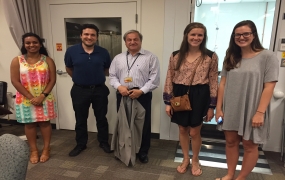What is something we only truly notice if we are uncomfortable?—our surrounding’s temperature! When we are comfortable the temperature rarely receives a second thought, but when we are cold or hot, we notice the discomfort immediately. Temperature regulation for The Kendeda Building for Innovative Sustainable Design came with unique challenges. The energy needs for the Living Building Challenge required that the electricity produced by the building exceed the energy used by the building on an annual basis. The heating and cooling systems (HVAC) for a building can account for over 50% of the total energy consumed. The Kendeda HVAC load did account for over 50% of the buildings total energy. Additionally, Atlanta is located in a sub-tropical region that brings higher temperatures and higher humidity and, of course, the corresponding higher building temperatures.
Human Thermal Comfort
The American Society of Heating Ventilation and Air-Conditioning Engineers (ASHRAE) developed ASHRAE 55, which defines 6 variables that constitute human thermal comfort:
- Air temperature: The “dry bulb” temperature that can be measured by a thermometer
- Radiant temperature: A weighted average of surface temperatures in the room
- Relative humidity: The percentage of water vapor in the air around the occupant
- Air velocity: The rate of air movement in the room
- Metabolic rate: The Energy generated by the occupant (based on the person’s level of exertion)
- Clothing: The Insulation the occupant is wearing
It is important to remember that thermal comfort is subjective—it is not the same for everyone. ASHRAE 55 states that comfort is achieved if 80% of people are satisfied. Knowing this, the building design team aimed to hit a point where the majority of people would be comfortable. The Kendeda Building considered the full range of comfort values in a way that most buildings do not. Comfort would not be sacrificed in the building, and it would be met in consideration of all the variables.
Setting a Baseline and Running the Experiment
During The Kendeda Building design process, the building engineers set a baseline temperature and relative humidity point for the building. The parameters that were considered were as high as 80F and 60% relative humidity (rh), which are higher than other set points in buildings typically observed across campus. This situation presented the opportunity for Georgia Tech to understand and quantify varying factors and conditions that make up human thermal comfort in order to best define acceptable design parameters for the Kendeda Building.
Greg Spiro, senior mechanical engineer in Facilities Management, planned an experiment to take advantage of an environmental chamber used on campus in Dr. Mindy Mallard-Stafford’s Exercise Physiology Laboratory. Dr. Millard-Stafford graciously allowed the experiment to operate out of a sealed chamber in her lab. Gathering a group of students and staff, Greg organized a test pilot that rated occupant comfort with different temperatures, relative humidity, and air speed conditions in the on-campus environmental chamber.
Three different baselines were tested:
- 73F/50%rh (typical standard on campus),
- 78F/55%/100fpm, 80F/60%rh/100fpm, and
- 80F/60%rh/150fpm.
A participant’s gender, age, and clothing were also noted. Participants went into the chamber that was set with those different points, and rated their comfort level immediately afterwards. The most significant result of the data set was that people were generally cooler but more comfortable at the baseline condition, while warmer and less comfortable at other conditions tested. The team decided to not exceed 78F and 50% rh.
A New Baseline
This study shed light on several factors that are key to human thermal comfort. A unique feature of The Kendeda Building that was not able to be recreated in the lab was the effect of radiant surface temperatures. However, helpful and relative information was still collected. It was recognized that The Kendeda Building may feel different than other traditional spaces on campus while still maintaining high comfort levels. Gathering people together in the room raised the awareness about thermal comfort, and brought the conversation to the forefront. The opportunity remains for research regarding the use of radiant surfaces in the building design vs. that of air movement. It is a compelling discussion that will influence design in our hot and humid climate.
The intent was that The Kendeda Building would be as comfortable as any other building on campus. In light of its stringent Living Building Challenge energy requirements, the thermal comfort point would be maintained by considering more than just temperature and relative humidity. This study demonstrated the interplay of additional variables. Georgia Tech rose to the challenge of meeting the unique situations posed by the construction and operation of a Living Building Challenge certified building. Pilot projects such as these provided the opportunity to test elements before the building opened, and ensured the building operated to the best of its ability.
Additional Information


